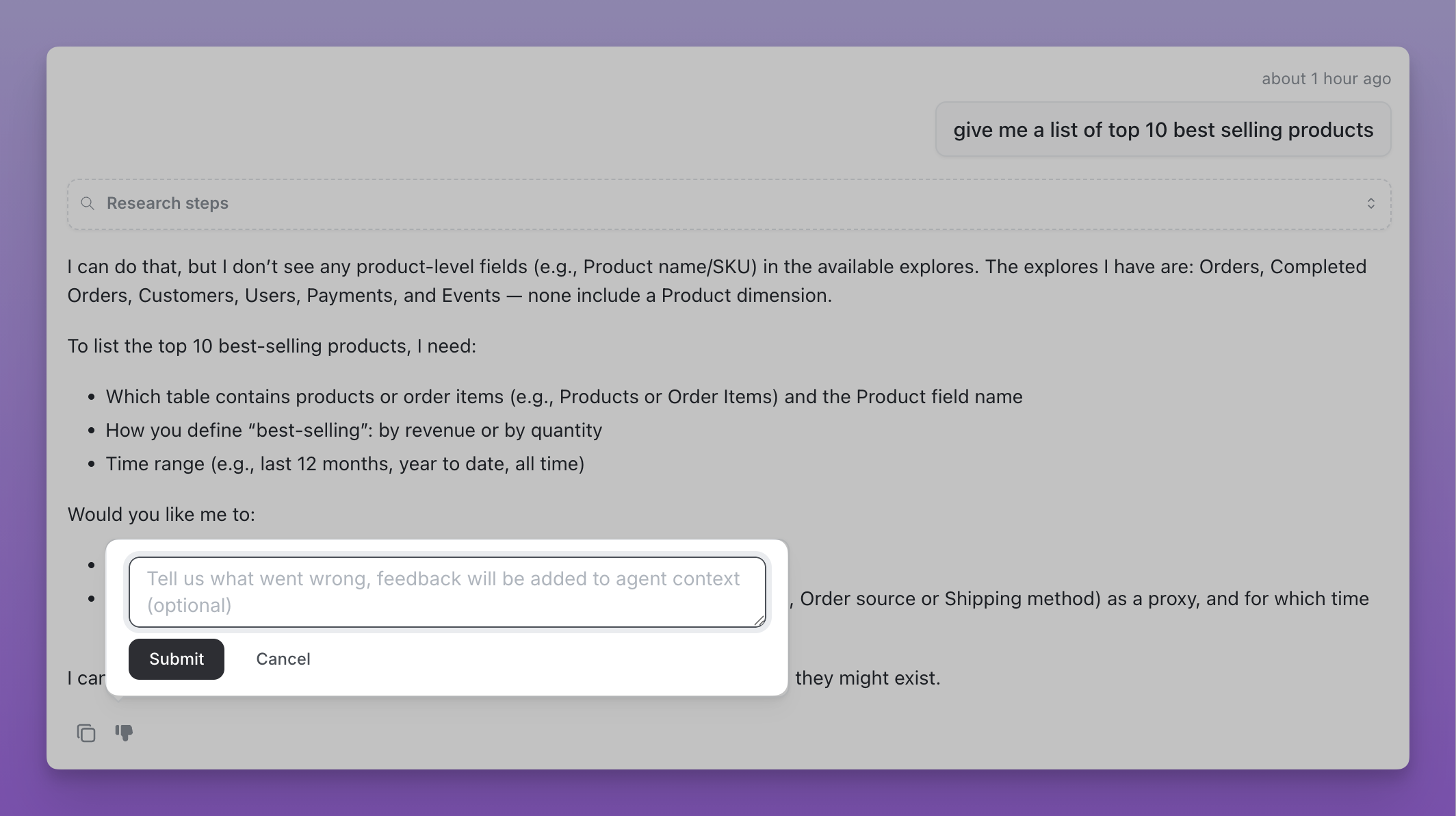Agent memory can be modified by admins and developers only
How it works
- When an agent makes a mistake or you provide clarification, it can capture this feedback
- The agent updates its instructions field with the new learning
- All future conversations with that agent will benefit from this accumulated knowledge
- Memories are stored directly in the agent’s instructions, which you can view and edit in agent settings
What agents can learn
Agents can learn various types of corrections and preferences:- Which tables or explores to use for specific types of queries
- Field selection preferences like “always use net_revenue instead of gross_revenue when generating revenue charts”
- Filter logic such as “exclude test accounts when counting customers”
- Chart type preferences like “use bar charts for categorical comparisons” or “prefer tables for detailed breakdowns over scatter plots”
- Complex chart patterns that require specific guidance, such as period-over-period analysis where you teach the agent what the expected output should look like
- General preferences about formatting, ordering, or analysis approaches
Providing feedback on responses
AI agents can improve over time with your feedback. After receiving an answer from your agent, you can provide feedback to help improve future responses: How to provide feedback:- Look for the thumbs up/down icons on any agent response
- Click thumbs down if the answer wasn’t helpful or accurate
- Optionally provide detailed feedback explaining what went wrong
- The agent will use your feedback when you follow up with additional questions in the same conversation
- Lightdash
- Slack

Feedback in Lightdash web app
- Immediate improvement - When you follow up after providing feedback, the agent uses your feedback to adjust its next response
- Identifying common issues - Helps spot patterns in misunderstandings or incorrect interpretations
- Long-term learning - Improves the agent’s understanding of your data and business context over time